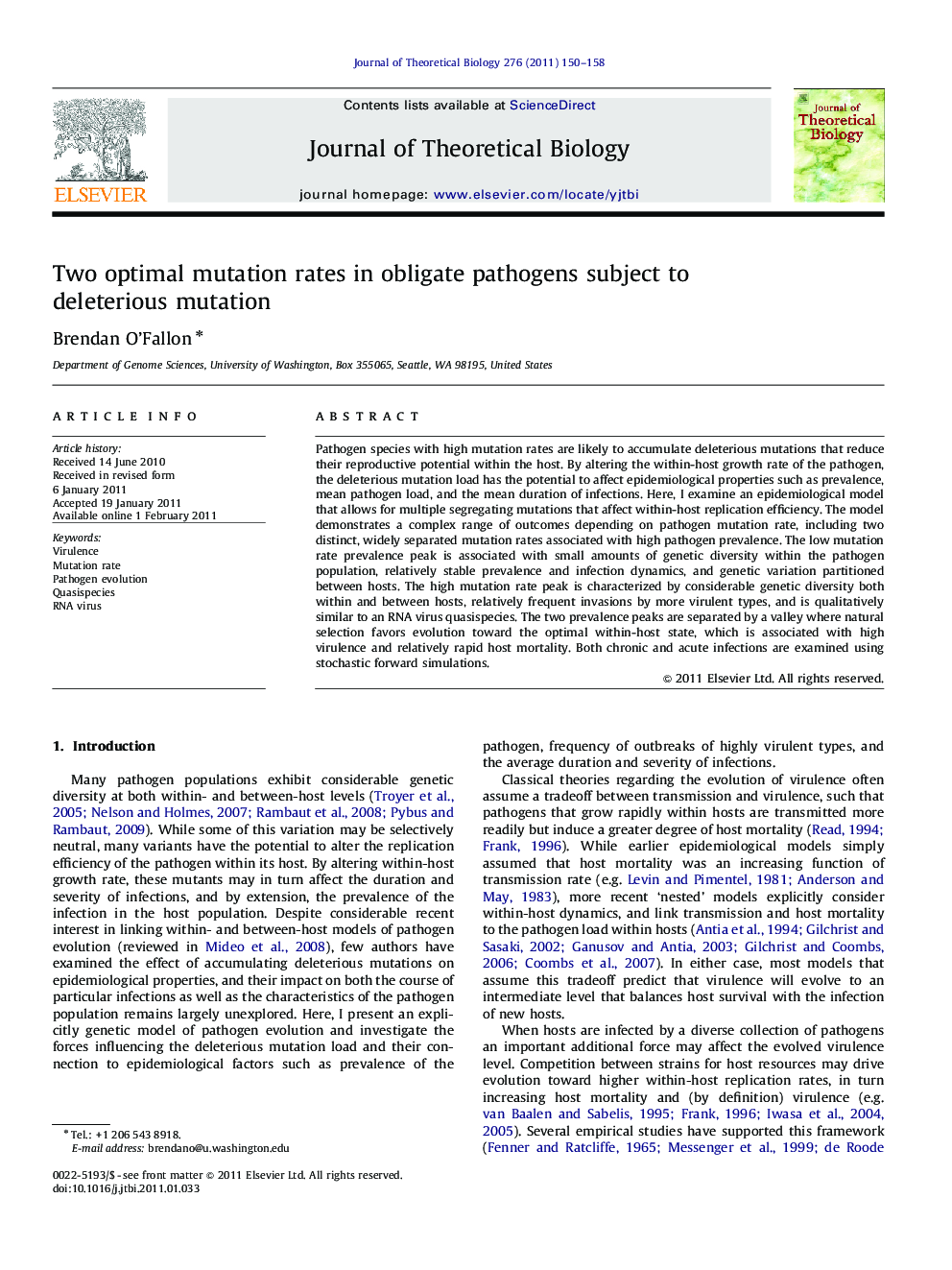| Article ID | Journal | Published Year | Pages | File Type |
|---|---|---|---|---|
| 4497186 | Journal of Theoretical Biology | 2011 | 9 Pages |
Pathogen species with high mutation rates are likely to accumulate deleterious mutations that reduce their reproductive potential within the host. By altering the within-host growth rate of the pathogen, the deleterious mutation load has the potential to affect epidemiological properties such as prevalence, mean pathogen load, and the mean duration of infections. Here, I examine an epidemiological model that allows for multiple segregating mutations that affect within-host replication efficiency. The model demonstrates a complex range of outcomes depending on pathogen mutation rate, including two distinct, widely separated mutation rates associated with high pathogen prevalence. The low mutation rate prevalence peak is associated with small amounts of genetic diversity within the pathogen population, relatively stable prevalence and infection dynamics, and genetic variation partitioned between hosts. The high mutation rate peak is characterized by considerable genetic diversity both within and between hosts, relatively frequent invasions by more virulent types, and is qualitatively similar to an RNA virus quasispecies. The two prevalence peaks are separated by a valley where natural selection favors evolution toward the optimal within-host state, which is associated with high virulence and relatively rapid host mortality. Both chronic and acute infections are examined using stochastic forward simulations.
